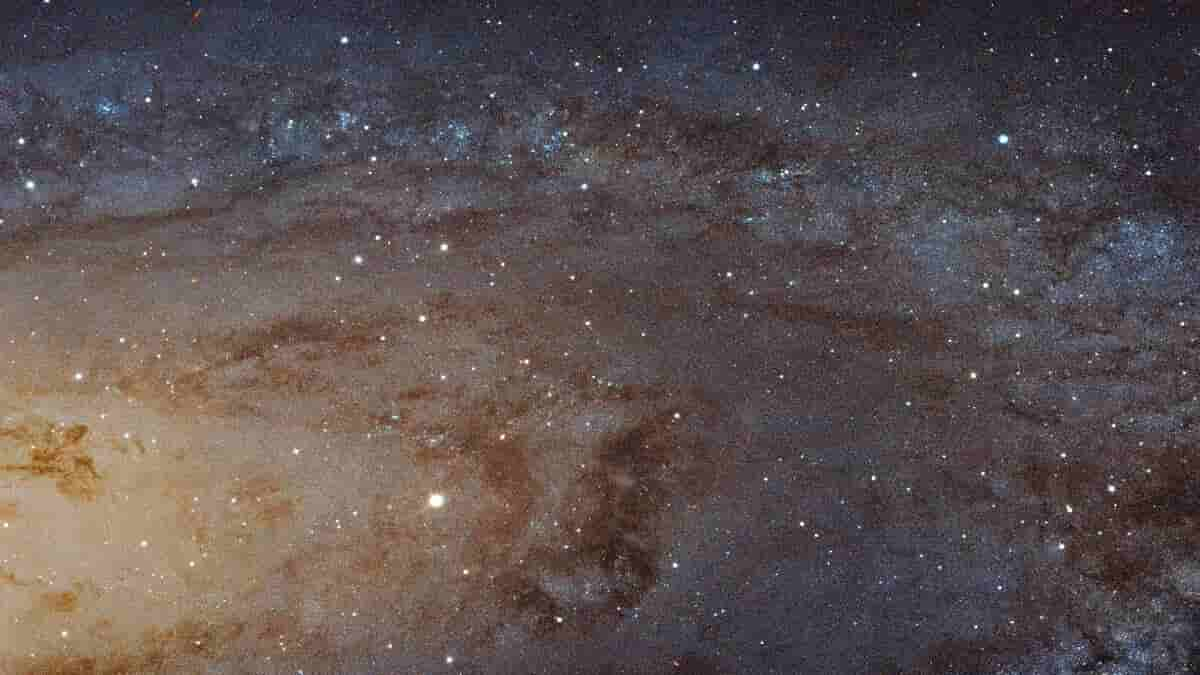NASA shares assembled image of the Andromeda galaxy taken with the Hubble seven years ago

NASA’s Hubble Space Telescope captured a stunning image assembled of the Andromeda galaxy in 2015 situated 2 million light years away from Earth and 61,000 light-years long stretch in a pancake-shaped disk-like structure. The Hubble telescope was able to clarify each of its grain-like stars counting over 100 million in each and thousands of star clusters remain embedded in the disk.
According to Hubble’s image, Andromeda has densely packed stars extending from the innermost region of the galaxy moving out towards the central galactic bulge which consists of stars and dust. The stars observed to develop a blue ring-like structure in the outer region are young massive stars still in formation. The dark silhouettes are traces of complex dust-like structures. The entire galaxy has a distribution of red stars which depicts it formed billions of years ago much like the Milky Way.
The Hubble’s image is assembled together into a mosaic image using 7.398 exposures taken over 411 individual paintings. The panorama picture taken is the product of the Panchromatic Hubble Andromeda Treasury (PHAT) program. Images were obtained using near-ultraviolet, visible light, and near-infrared wavelengths using the Advanced Camera for Surveys and the Wide Field Camera 3 aboard Hubble.
The panorama image of Andromeda has been published at the Astronomical Society’s 225th meeting in Seattle, Washington. The Hubble Space Telescope has been created by NASA in collaboration with the European Space Agency (ESA). The Hubble telescope is managed by NASA’s Goddard Space Flight Center in Greenbelt, Maryland and its scientific operations are conducted by the Space Telescope Science Institute (STScl) in Baltimore.
Today NASA has posted the iconic image of the Andromeda on its Twitter handle marking its 7th year. NASA tweeted, “Seven years ago, NASA Hubble captured its largest ever image assembled of the Andromeda galaxy in brilliant clarity, showing a 48,000-light-year-long stretch of our cosmic neighbor with over 100 million stars in this view.”
More like An-Drama-da 🌌
Seven years ago, @NASAHubble captured its largest-ever image assembled of the Andromeda galaxy in brilliant clarity, showing a 48,000-light-year-long stretch of our cosmic neighbor with over 100 million stars in this view. https://t.co/PXld5djxa8 pic.twitter.com/Yx2FNAxM5S
— NASA (@NASA) July 31, 2022


